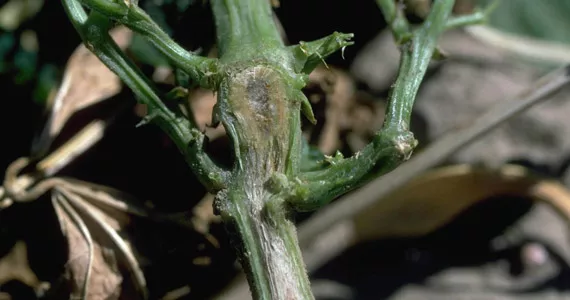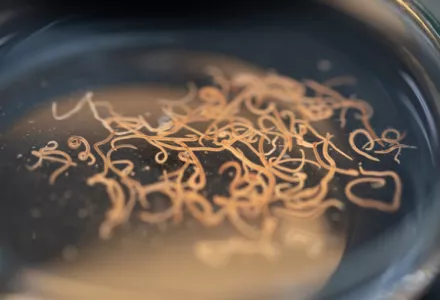Fusarium is a large genus of soil fungi widely distributed in the world. Most species are harmless saprobes and are relatively abundant members of the soil microbial community. nonetheless, some Fusarium species are economically important due to their devastating impact on crops.
Fusarium species
In the beginning there was confusion on its taxonomy with more than 1,000 species, varieties and races. People started to realize that Fusarium causes serious diseases and became relevant to make a precise classification system. Nowadays, scientists still debate the classification system from nine to about fifty species, zero to 29 varieties and zero to twelve forms.

Due to the confusion in identifying many Fusarium species, the classification is also based on the plant symptomatology. Therefore, most of the species have been divided in groups that are represented by the type of disease, like the Fusarium stem canker, the Fusarium foot rot and Fusarium wilt species groups.
Fusarium type of disease
Fusarium stem canker group is a soil fungus caused by six species (F. sulphureum, F. graminearum, F. lateritium, F. sambucinum, F. avenaceum and F. culmorum). Fusarium foot rot and root rot group is a soil fungus caused principally by F. solani. Fusarium wilt group is a vascular fungus caused by a xylem pathogen called F. oxysporum. In this group, F. oxysporum has several specialized forms – known as formae specialis (f.sp.) - that infect a variety of hosts causing various diseases.
F. oxysporum f.sp vasinfectum and F. oxysporum f.sp. apii cause damping-off and both are morphologically identical but the host changes, giving the name of the sub-specie. However, there is an ongoing debate on this classification system as many scientist suggest that F. oxysporum f.sp apii is from the same group of f.sp vasinfectum. Thus, the characterization of sub-specific groups is nowadays based on the generics of the fungus rather than on the host-pathogen interaction.

F. oxysporum f.sp.cubenses is a well defined sub-species that causes the Panama disease of Musa spp. This pathogen has caused the disappearance of the banana cultivar ‘Gross Michael’. Afterwards, a new banana variety Cavendish was introduce due to its resistance to Fusarium. Like in banana, extensive breeding for resistance to Fusarium spp. is in progress in a wide range of crops, notably cereals, cotton, potato and tomato.
Fusarium disease damage and cycle
Fusarium colonies are usually pale or brightly colored (depending on the species) and may have a cottony aerial mycelium. Their color varies from whitish to yellow, brownish, pink or reddish. Species of Fusarium typically produce spores (called macro- and microconidias) for reproduction and dissemination.
Fusarium stem canker symptoms begin with an epidermal lesion, followed by chlorosis and necrosis. Close to the lesion, the trunk, branches or stems normally swell creating a canker that can split open. Leaves on affected stems wilt and necrose, without falling off the plant. This pathogen is also able to infect seedlings where it causes damping-off.
Base of host symptomatology, Fusarium foot rot may be confused with Fusarium stem canker as both of them cause canker. However, Fusarium stem canker leads to a reddish xylem discoloration while Fusarium foot rot is distinguished by soft, dark or black cankers that shows a dark brown discoloration of the stem.

Fusarium solani (root rot) is a saprophytic fungus, which means it can colonize dead or dying plant tissues. The fungus can invade stems at the nodes or at the soil line, taking advantage of wounds. Its spores germinate during prolonged periods of high humidity and temperature.
Fusarium oxysporum (wilt) is also saprophyte fungi that survive in the soil between crop cycles in infected plant debris. The fungus can survive either as mycelium, or as any of its three different spore types. The roots can be infected directly through the root tips or wounds. Once inside the plant, the mycelium grows through the root cortex until it reaches the xylem and later, through the whole plant’s vascular tissue. This condition reduces water and nutrient uptake, the leaves wilt, and the plant eventually dies.

Fusarium management and control
Pathogenic Fusarium species are difficult to control due to their ability to survive in soil for long periods, with or without a host plant, besides their saprophyte condition.
Learning the symptoms of the disease in the early stage is the most effective practice to prevent Fusarium spread. Furthermore, disinfestations of the soil and use of fungicidal chemicals, crop rotation, or by using resistant cultivars, are the cultural, biological and chemical practices to manage Fusarium diseases.



















